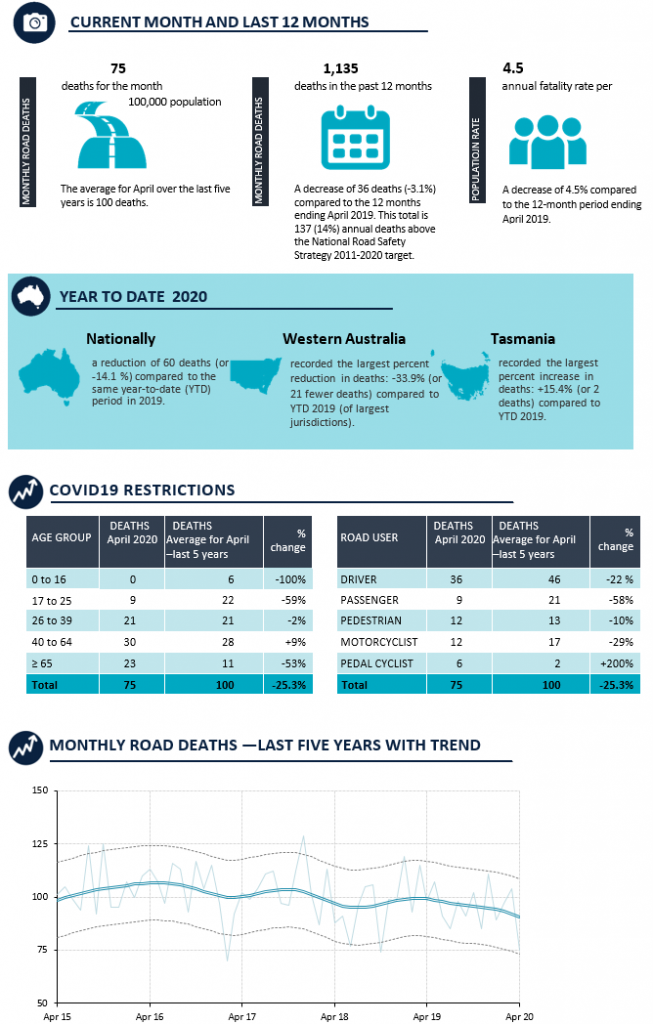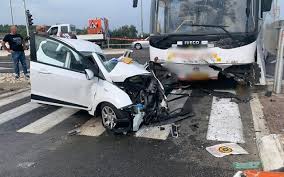COVID-19 and Deaths on our Roads
The death rate on our roads is down an average 25% because of the Covid-19 lockdowns. The lockdowns have meant less cars on the road. The COVID-19 pandemic has no doubt had an enormous impact, both socially and economically, on the Australian community and on the world. It’s arguable however that there are some areas of life that the pandemic has actually improved. One area in particular is that of Transport, Traffic and the encompassing death toll from road accidents each year caused by our increasing traffic on our roads.
The death toll on our roads has been increasing with the increasing volume or vehicles on our roads over the years. This is a crisis that we are continuing to fight everyday and the aim of the government is to aim for zero deaths on our roads. This crisis of the road toll injuries and deaths causes suffering, loss and economic hardship to countless numbers within our communities.
Currently, due to community lock downs and restrictions caused by COVID19, the majority of us are enjoying the lack of traffic on the roads, being able to reach our destinations in good time, waiting at red lights less frequently and not being stuck in a red sea of bumper lights trying to get home from work. The air is cleaner, the petrol prices have dropped. Most importantly, there have been less accidents on the road and therefore, less deaths.
Eventually, we will return to ‘life as usual’. Traffic will increase, petrol will go up in price and if we aren’t careful, things will return to normal with the death and injury toll due to road exposure increasing. The question is, will we learn anything from our experience during COVID19?
Some lessons for consideration after COVID-19 has passed:
1. Reducing the number of vehicles on the road ultimately reduces road fatality
Whilst lockdowns have had some negative impacts, the result of them has also led to less cars on the road and therefore less people being exposed to the possibility of injury and fatality. When life returns to “normal”, our exposure to road injury and fatality increases by our accessibility to the road. This brings into focus the value of exposure reduction as a proactive intervention to road safety. Previously, we have not addressed the concept of trying to reduce the actual number of cars on the road because we focused so narrowly on the road transport system itself when discussing safety i.e increasing road rules etc.
2. Reducing exposure to the road helps our community
We have had a taste of the community benefits already. Long-term, by reducing our exposure to the roads, we could in theory have cleaner air, less green-house gas emissions, less noise, cheaper fuel prices, less air pollution, less traffic, less road works and expense to tax payer funds, greater opportunities for transport to build in our communities.
3. Reducing the number of cars on the road helps us restructure our working lives
The pandemic has forced most of us to work and study from home where possible. Ever advancing internet connections and online capabilities have made this easier than ever with online conferences, classes, video links etc making the need for “face to face” interaction less essential. For many, working from home has proven to be more effective than expected, and has provided us a way to rethink our business models and society work operations. It has now easier than ever to imagine a society where you work from home 2-3 days a week and only attend the work place for face-to-face meetings on a needs basis. That leaves us with the remaining jobs and personnel that must be on the road frequently in order to complete their work and working from home is not an option. By staying home, those of us that can work from home will provide these essential road users safer access to transport, less traffic and congested roads all by limiting unnecessary exposure to the road.
4. Reducing the number of people on the road assists Police and Law Enforcement
The main cause of road fatalities are; Speeding, Drugs and Alcohol, Fatigue, Seatbelts and Mobile phones / Distractions (Called the “Fatal 5”). All of these five factors are easily prevented and within human control. The human element is the problem though. If there was a decrease in the number of vehicles on the road then in theory, Police and law enforcement would be more able to single out those acting dangerously on our roads. There would be greater capacity to conduct licence checks and more time and capability to conduct random breath testing.
5. Reducing road exposure could help support our public transport system
In Australia, we pay some of the most expensive rates for public transport than anywhere else in the world. There could be many reasons for this including our dependence on private vehicles to get us from A to B. If we were able to reduce the amount of exposure of private vehicles on the road, our public transport systems would be better supported and in turn, prices may reduce for everyone catching public transport.
The impacts of COVID19 will not last forever however the lessons we learn from this pandemic can. With restrictions being slowly lifted, we have a choice as to whether we are going to see a rise in the road death toll again. What we do know is that with less vehicles on the road, there are less fatalities.
Here are some interesting charts –
Road Fatalities – Deaths per 100,000 population (Country)
\






